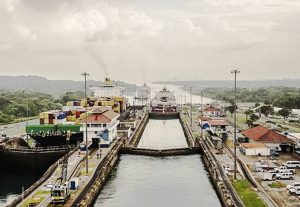Bloomberg
https://www.bloomberg.com/multimedia/api/embed/iframe?id=b627aa2a-a5d9-4f28-bcf8-b03b0de938a2
Chile’s Green Hydrogen Push Will Be Huge, Minister Says –Watch video in the original size
– South American countries place an emphasis on domestic demand first
– 59% of electricity in Latin America and the Caribbean sourced from renewable energy
By Leslie Gavriliuc / Platts
LONDON
Petroleumworld 11 09 2021
South America, rich in renewable energy resources, has the potential to produce more low-carbon hydrogen than it could consume domestically — positioning the continent to become a leader in the development of a global hydrogen economy, according to a panel of speakers at the Oxford Institute for Energy Studies webinar on Hydrogen in South America on Nov. 5.
Although exports will play an important role as hydrogen projects begin to scale up, the initial focus is on domestic decarbonization.
“Focusing exclusively on exports is missing the point,” said Mariano Berkenwald, International Energy Expert and former Latin America Program Officer for the International Energy Agency. Berkenwald continued by emphasizing the need for countries to “focus on smaller projects to enable smaller local hydrogen ecosystems,” such as high altitude mining in Chile and Peru.
Argentina has been producing green hydrogen through small pilot projects since 2009, utilizing it for both power generation and methane production to be used in various applications.
Approximately 59% of the electricity generation matrix in Latin America and the Caribbean is sourced from renewable energy, according to Alfonso Blanco Bonilla, executive secretary of the Latin American Energy Organization. The issue, he said, is the lack of a developed market to provide adequate demand necessary for production.
Government roadmaps
In this, governments will also play an important role in the development and adoption of low-carbon hydrogen production, with more than 10 countries in Latin America in the process of publishing or having already published national hydrogen roadmaps.
Brazil’s National Hydrogen Program combines specific objectives with government committees to address structure, targets, and policies for integration. The country has $40 million in public and public-oriented investments in research and development and $22 billion in announced investments, including large-scale, low-carbon hydrogen projects currently under feasibility studies in Ceara, Rio de Janeiro, and Pernambuco.
Brazil, one of the largest food producers in the world, imports vast amounts of fertilizers and all its methanol. This large domestic demand, combined with already-existing industrial complexes, could contribute to reducing dependency on imports and provide a potential surplus in low-carbon hydrogen production within the country, Thigo Barral Ferreira — CEO of Brazil’s Energy Planning Company — told OIES during the webinar.
As projects are scaled up, global exportation will need cooperation from government as well. Importers are likely to require certification of the carbon intensity in the production of hydrogen, according to Berkenwald, and considerations of certification schemes have been presented as a part of several national strategies. This will open doors for global importers looking to South America for lower production costs utilizing an abundance of renewable energy.
One such project in Chile – Haru Oni – presented by Siemens Energy, partners with German industry for the offtake of e-fuels by Porsche. The project, in the pilot phase until 2022, will use wind turbines and direct air capture to power operations and provide feedstock for methanol synthesis. Siemens expects 55 million liters of e-fuel per year to be produced in phase one, from 2022-2024.
Panelists at the OIES webinar agreed that there was room for both competition and cooperation moving forward as the world moves toward the collective goal of decarbonization. “We must learn to live with a carbon budget. It will not be easy, but we need to do it,” said Hernan Carlino, head of the Global Climate Change Research Centre, at the conclusion of the event.
South America is in a position to drive this change forward – domestically at first, but then through global markets as economies of scale develop, panelists said.
_____________
By Leslie Gavriliuc from S&P Global Platts
spglobal.com /11 08 2021
Copyright ©1999-2021 Petroleumworld or respective author or news agency. All rights reserved.
Petroleumworld.com Copyright ©2021 Petroleumworld.











